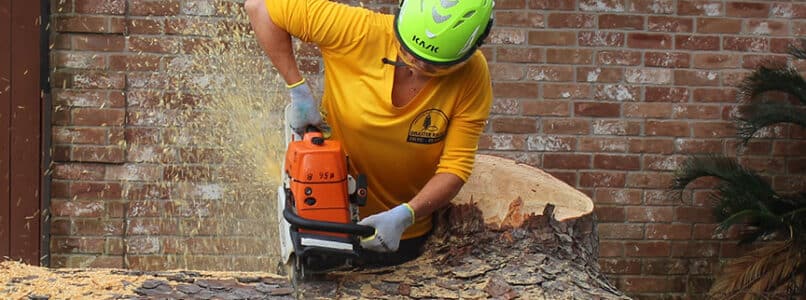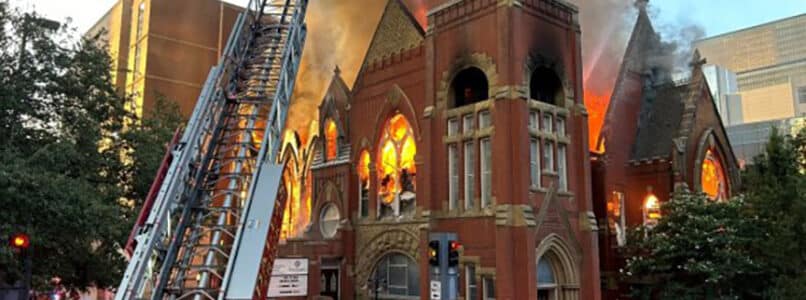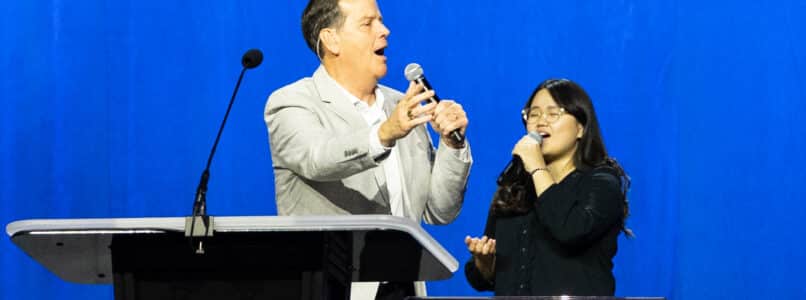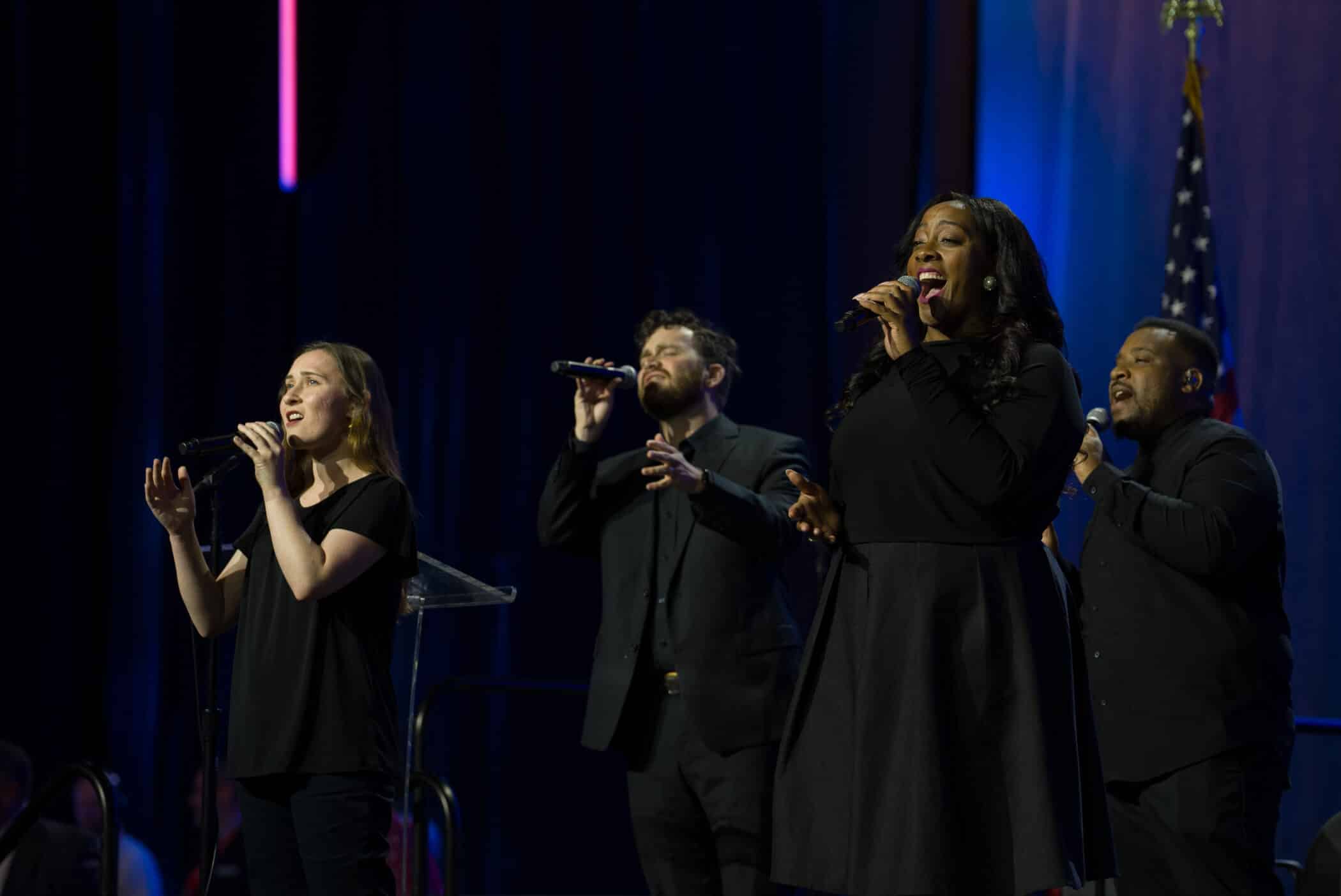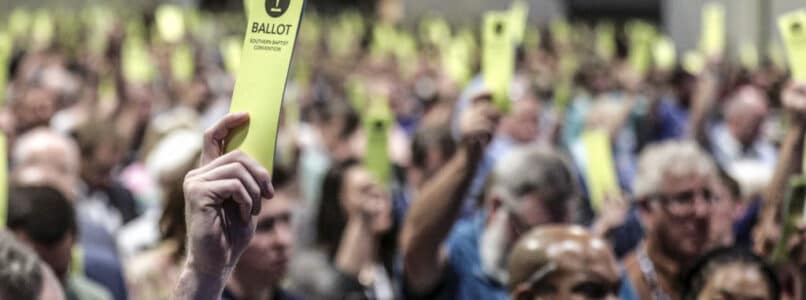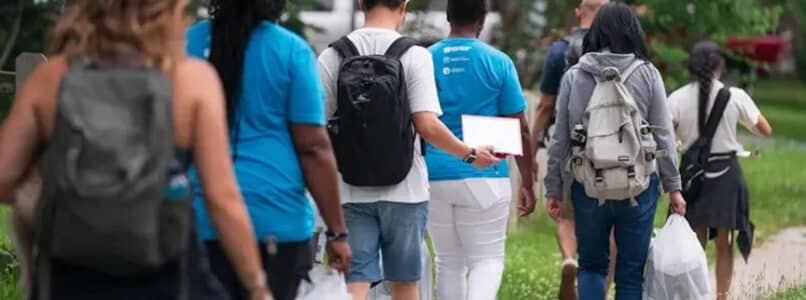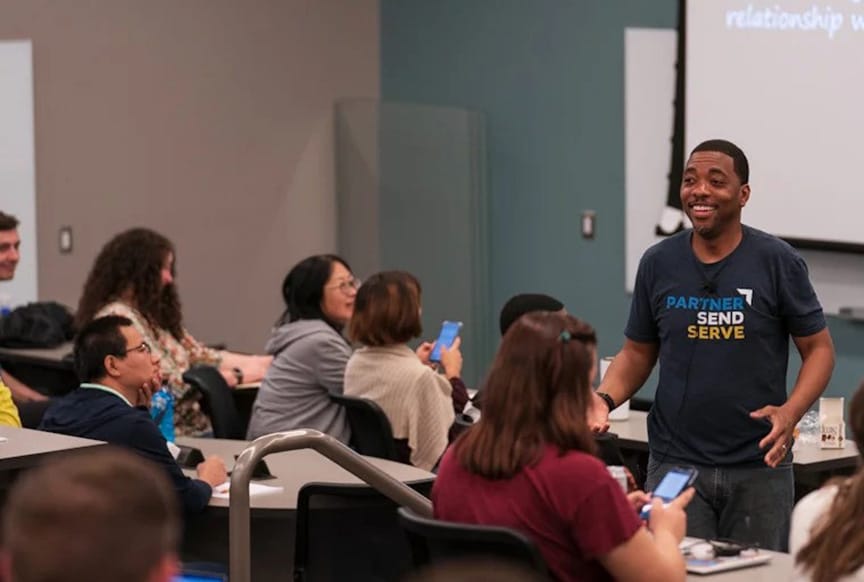SOUTHEAST TEXAS—The man’s bruised face said it all. A limb had flown back, striking him hard as he used a chainsaw to cut up a tree felled by the EF2 tornado that ripped through Jasper County on July 8 in the wake of Hurricane Beryl.
“We had eight tornadoes in our area on that date,” veteran Southern Baptists of Texas Convention Disaster Relief chaplain Wayne Barber said. “Not all hit the ground.”
The disaster—as disasters tend to do—provided opportunities for spiritual and physical assistance.
Eight tornadoes, nine salvations
Almost immediately after the tornadoes, Barber and other SBTC DR volunteers from Hillcrest Baptist Church in Jasper moved into the community, joining their neighbors to see who needed help. Soon, other SBDR crews would come to the area to help.
Barber, among those who responded, approached the man struck by the limb and they began talking.
“What would you do if that limb had taken your life?” Barber asked the man and his friend who was there to help.
“He didn’t know what to say,” Barber later recalled.
After Barber presented the gospel, both men prayed to trust Christ as their Savior. Seven more salvations ensued over the next few days as SBTC DR chaplains ministered to survivors.
The Hillcrest Baptist SBTC DR volunteers were in the right place at the right time to minister quickly following the storms. Hundreds of SBDR teams from Texas and other states hurried to Southeast Texas soon after Beryl made landfall between Corpus Christi and Galveston as a category 1 storm about 4:30 a.m. on July 8, striking a region already inundated by pre-hurricane rains.
SBDR crews set up mass feeding units and shower/laundry trailers to serve immediate needs. Chaplaincy, chainsaw, and mud-out crews followed, their work overseen by SBDR incident management teams and unit leaders, also known as “white hats.”
As is typical in such situations, neighbors and community members also pitched in to help those affected.
“It’s the biggest mass deployment since Hurricane Harvey,” Stice said of the ongoing effort. “ … There’s still work to be done.”
A coordinated effort
Much work has been done by SBTC DR teams in addition to other Baptist DR teams from Texas and across the nation.
“Our SBTC DR teams, together with others, have served from Spring to Conroe, down into Houston. We’ve had work orders from Cleveland, Livingston, Jasper, and elsewhere. We’ve fed folks in Wharton … and we’re still at it helping survivors recover.”
Stice explained that SBTC DR serves in such situations as part of a larger coordinated effort among state Baptist DR teams, whose units deploy in strategic locations to avoid duplicating efforts. Feeding teams often work in conjunction with workers from the Red Cross and Salvation Army, who distribute food prepared by the Baptists.
Such was the case in Wharton, where an SBTC DR mass-feeding kitchen and a shower/laundry trailer operated until the site closed July 14. SBTC DR teams prepared more than 15,000 meals, in addition to providing showers and laundry services, logging a total of 1,100 volunteer hours.
Among other tasks, SBTC DR continues to operate a HAM radio communications network to help coordinate the overall response. SBTC DR and out-of-state Baptist DR partners are still responding to chainsaw needs in Spring, Texarkana, Huffman, and Jasper.
As of July 24, volunteers headquartered at Spring Baptist Church have logged nearly 3,000 volunteer hours, completing chainsaw and roof-tarping jobs. A single SBTC DR chainsaw team working out of Hillcrest Baptist Church has contributed 1,624 volunteer hours to complete more than 70 chainsaw jobs in the Kountze/Jasper area. Another SBTC DR team and a crew from Louisiana Baptist DR have worked in Lumberton out of Calvary Baptist Beaumont’s North Campus.
Arkansas disaster relief chainsaw teams are laboring in Texarkana, while Alabama and South Carolina crews have joined SBTC DR to work in Huffman, logging more than 6,000 volunteer hours.
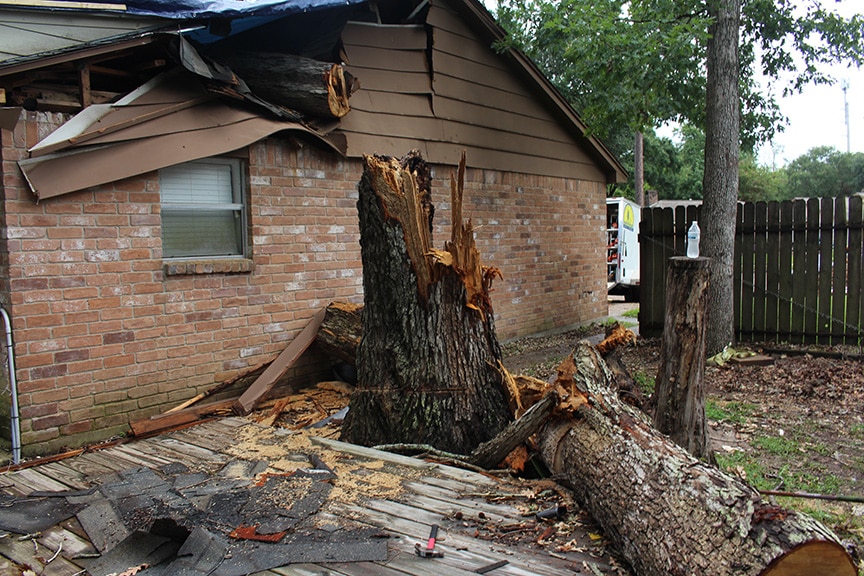
By the grace of God
For Robert Frank, a maintenance staffer at Spring Baptist Church, the efforts of SBDR to assist his mother will never be forgotten.
Mary Frank, 76, has lived in the same Spring house since childhood. The massive pecan tree that once graced her half-acre yard was large when she moved in at age 12. Mary recalled climbing the tree often as a kid.
At the end of the storm, Robert—who lives in the family home and helps his mom care for the place—left to check on the Spring Baptist Church campus. Then he received an unexpected phone call from home.
“The tree fell and I can’t see my car,” Mary exclaimed. Shortly after this, neighbors arrived to cut the tree away from the car and clear Mary’s driveway.
“That more than 80-year-old tree had been leaning toward the house. It should have fallen on the home,” Robert said. “By the grace of God, that tree fell onto a narrow 10-foot space between the house and the fence.”
Robert put in a work order request to SBDR teams headquartered at the church, and a DR crew from the Tennessee state convention came to finish cutting up the tree, leaving only its stump.
“They did an awesome job,” Robert said. As a bonus, Mary loved the company, he added. “Miss Jane, the lady [who showed up with] the crew, talked with her. They gave her a Bible. It was a great encouragement.”
To contribute to Hurricane Beryl relief efforts and/or learn how to receive DR training and become a credentialed SBTC DR volunteer, visit sbtexas.com/disaster-relief/.

